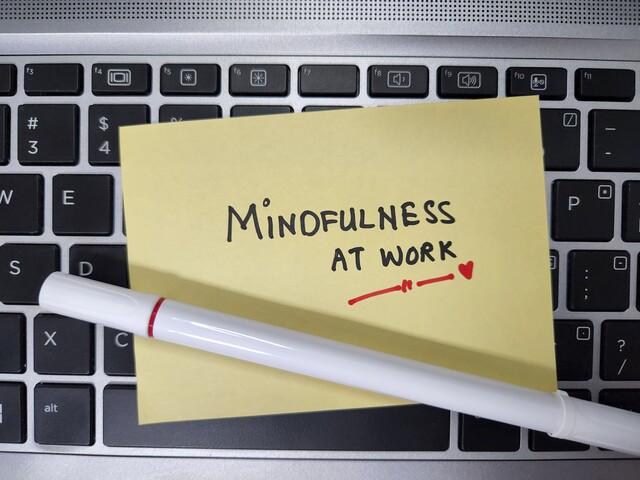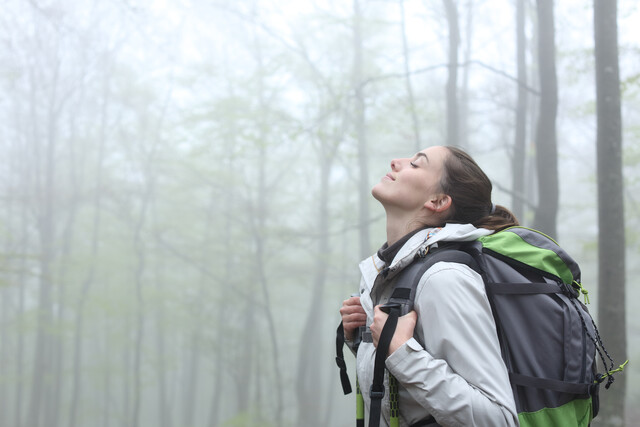Online Class: Meditation Mastery — Learn How to Meditate

-
12Lessons
-
21Exams &
Assignments -
8Hours
average time -
0.8CEUs
Course Description
Can you imagine a life where your mind is a source of peace and strength, where calmness flows through you like a gentle river even amidst daily challenges? What if you had the power to control your thoughts, steady your emotions, and tap into a deeper well of wisdom within yourself? Meditation Mastery is more than a course; it's a path toward true mental clarity, emotional resilience, and enriched creativity. This transformative journey goes beyond the surface, taking you into the profound depths of mindfulness and self-awareness that meditation has inspired for thousands of years.
In Meditation Mastery, you'll discover the art and science of meditation from the ground up. Through techniques that include classic seated meditation, breathing practices, and the dynamic integration of yoga, you'll not only learn how to meditate-you'll understand the very essence of mindfulness, experiencing how it can reshape your daily life, your relationships, and your sense of self. This isn't just about learning a new habit; it's about embracing a practice that can anchor you, empower you, and help you find clarity in a chaotic world.
The course introduces you to the foundational skills needed for meditation, from creating a peaceful physical space to practicing different postures that promote both comfort and focus. You'll explore various breathing techniques that naturally soothe the mind and guide you into a state of profound relaxation and presence. Each practice is designed to help you find the right balance: a place where you're fully engaged in the "now," without forcing or judging, simply present and aware.
Our exploration goes even deeper as we examine the health benefits of meditation, revealing how it can reduce stress, improve focus, and promote better sleep. Drawing on recent scientific insights, you'll see how meditation can benefit not only your mind but your body, nourishing your nervous system and supporting your overall well-being. You'll learn how these practices can become a sustainable part of your daily and weekly routines, so you're consistently rejuvenated, balanced, and clear-headed.
Throughout the course, you'll uncover the historical roots of meditation, tracing its evolution from ancient Vedic practices to modern-day wellness applications. You'll also see how meditation has woven itself into spiritual practices across diverse religions, showing its universal appeal in the search for peace and understanding.
Each lesson invites you to experience meditation as a deeply personal, transformative journey. Whether you're new to meditation or have dabbled before, Meditation Mastery meets you right where you are, providing a supportive, insightful guide every step of the way. You'll learn not only how to meditate but why meditation has become an essential practice for people seeking a fuller, more balanced life.
If you're ready to make a change that goes beyond the superficial-if you're seeking to truly connect with yourself and find a place of peace within-Meditation Mastery is your path forward. This isn't just another course; it's an invitation to discover the power and peace that lie within you. Take the first step today toward a more centered, inspired life.
Course Lessons
Lesson 1. Discovering Meditation's Transformative Power
 Lesson 1 Video
Lesson 1 Video Review Practice Worksheet: Lesson-1-HomeWork-9893.pdf
Review Practice Worksheet: Lesson-1-HomeWork-9893.pdf Lesson discussions: Meditation; Reasons for Taking this Course
Lesson discussions: Meditation; Reasons for Taking this Course Complete Assignment: An Introduction
Complete Assignment: An Introduction Assessment: Lesson 1: What is Meditation?
Assessment: Lesson 1: What is Meditation?
Lesson 2. Finding Purpose and Clarity Through Meditation
 Lesson 2 Video
Lesson 2 Video Review Practice Worksheet: Lesson-2-Downloadable-9894.pdf
Review Practice Worksheet: Lesson-2-Downloadable-9894.pdf Assessment: Lesson 2: Why Meditate?
Assessment: Lesson 2: Why Meditate?
Lesson 3. Crafting Your Calm Corner: A Guide to Meditation Spaces
 Lesson 3 Video
Lesson 3 Video Review Practice Worksheet: Lesson-3-Activity-9895.pdf
Review Practice Worksheet: Lesson-3-Activity-9895.pdf Lesson discussions: Meditation Space
Lesson discussions: Meditation Space Complete: Lesson 3 Assignment
Complete: Lesson 3 Assignment Assessment: Lesson 3: Proper Physical Space for Meditation
Assessment: Lesson 3: Proper Physical Space for Meditation
Lesson 4. Journey of the Breath: Unlocking Inner Peace
 Lesson 4 Video
Lesson 4 Video Review Practice Worksheet: Lesson-4-HomeWork-9896.pdf
Review Practice Worksheet: Lesson-4-HomeWork-9896.pdf Complete: Lesson 4 Assignment
Complete: Lesson 4 Assignment Assessment: Lesson 4: Mindfulness of Breathing
Assessment: Lesson 4: Mindfulness of Breathing
Lesson 5. Exploring Perfect Meditation Positions
 Lesson 5 Video
Lesson 5 Video Review Practice Worksheet: Lesson-5-Activity-9897.pdf
Review Practice Worksheet: Lesson-5-Activity-9897.pdf Complete: Lesson 5 Assignment
Complete: Lesson 5 Assignment Assessment: Lesson 5: Proper Meditation Postures
Assessment: Lesson 5: Proper Meditation Postures
Lesson 6. Unlocking Inner Peace: Meditation's Impact on Health and Happiness
 Lesson 6 Video
Lesson 6 Video Review Practice Worksheet: Lesson-6-HomeWork-9898.pdf
Review Practice Worksheet: Lesson-6-HomeWork-9898.pdf Assessment: Lesson 6: Health Benefits of Meditation
Assessment: Lesson 6: Health Benefits of Meditation
Lesson 7. The Universal Path of Meditation
 Lesson 7 Video
Lesson 7 Video Review Practice Worksheet: Lesson-7-WordSearch-9899.pdf
Review Practice Worksheet: Lesson-7-WordSearch-9899.pdf Assessment: Lesson 7: History of Meditation
Assessment: Lesson 7: History of Meditation
Lesson 8. Meditative Traditions: From Ancient Practices to Modern Mindfulness
 Lesson 8 Video
Lesson 8 Video Review Practice Worksheet: Lesson-8-WorkSheet-9900.pdf
Review Practice Worksheet: Lesson-8-WorkSheet-9900.pdf Assessment: Lesson 8: Meditation and Religion
Assessment: Lesson 8: Meditation and Religion
Lesson 9. The Balanced Journey: Escaping Extremes in Search of Enlightenment
 Lesson 9 Video
Lesson 9 Video Review Practice Worksheet: Lesson-9-WorkSheet-9901.pdf
Review Practice Worksheet: Lesson-9-WorkSheet-9901.pdf Complete: Lesson 9 Assignment
Complete: Lesson 9 Assignment Assessment: Lesson 9: Path to Enlightenment
Assessment: Lesson 9: Path to Enlightenment
Lesson 10. Exploring Meditation Techniques: A Path to Self-Discovery
 Lesson 10 Video
Lesson 10 Video Review Practice Worksheet: Lesson-10-Activity-9902.pdf
Review Practice Worksheet: Lesson-10-Activity-9902.pdf Complete: Lesson 10 Assignment
Complete: Lesson 10 Assignment Assessment: Lesson 10: Meditation Techniques
Assessment: Lesson 10: Meditation Techniques
Lesson 11. Embrace Harmony with Foundational Yoga Poses
 Lesson 11 Video
Lesson 11 Video Review Practice Worksheet: Lesson-11-HomeWork-9903.pdf
Review Practice Worksheet: Lesson-11-HomeWork-9903.pdf Complete: Lesson 11 Assignment
Complete: Lesson 11 Assignment Assessment: Lesson 11: Meditation and Yoga
Assessment: Lesson 11: Meditation and Yoga
Lesson 12. Morning Pages and Artist's Dates: Nurturing Creativity and Clarity
 Lesson 12 Video
Lesson 12 Video Review Practice Worksheet: Lesson-12-Downloadable-9904.pdf
Review Practice Worksheet: Lesson-12-Downloadable-9904.pdf Lesson discussions: Morning Pages; Program Evaluation Follow-up Survey (End of Course); Course Comments
Lesson discussions: Morning Pages; Program Evaluation Follow-up Survey (End of Course); Course Comments Complete: Lesson 12 Assignment
Complete: Lesson 12 Assignment Assessment: Lesson 12: Daily and Weekly Meditation: Morning Pages and Artist’s Dates
Assessment: Lesson 12: Daily and Weekly Meditation: Morning Pages and Artist’s Dates Assessment: The Final Exam
Assessment: The Final Exam
Learning Outcomes
- Define the impact of meditation on reducing stress and enhancing emotional well-being through regular practice.
- Demonstrate the ability to apply different meditation techniques, such as breath awareness and body scan, for improved mindfulness and self-awareness.
- Describe how the practice of meditation balances the concepts of control and surrender to enhance self-acceptance and peace in the present moment.
- Identify three practical benefits of regular meditation practice, focusing on stress reduction, enhanced concentration, and emotional stability, and explain how these benefits can improve daily life.
- Demonstrate the ability to create a personalized meditation space by selecting an area that enhances physical comfort and mental focus.
- Organize a weekly meditation routine by setting a consistent time and place to deepen practice and maintain a relaxed state.
- Define how mindfulness of breathing can enhance emotional resilience and promote clarity in stressful situations.
- Demonstrate the ability to use mindfulness of breathing techniques, such as observing long and short breaths, to achieve a calm and focused state.
- Define the key components of a proper meditation posture, including straight back, relaxed shoulders, and aligned head and neck, by the end of the lesson.
- Demonstrate the ability to maintain a comfortable and stable meditation posture for at least five minutes, ensuring relaxation and alertness, by the end of the lesson.
- Define how meditation activates the body's relaxation response to reduce stress hormone levels like cortisol and improve overall mental well-being.
- Demonstrate an understanding of the impact of meditation on cardiovascular health by identifying how regular practice can lead to lowered blood pressure and improved heart function.
- Describe the historical evolution of meditation, identifying key cultural and religious influences from Hinduism and Buddhism.
- Demonstrate mastery of lesson content at levels of 70% or higher.
Additional Course Information

- Document Your Lifelong Learning Achievements
- Earn an Official Certificate Documenting Course Hours and CEUs
- Verify Your Certificate with a Unique Serial Number Online
- View and Share Your Certificate Online or Download/Print as PDF
- Display Your Certificate on Your Resume and Promote Your Achievements Using Social Media

Student Testimonials
- "I really appreciated the teachings of Meditation 101, and the feedback I received from my instructor. This course provided the perfect introduction to the history of, and practical application of, Meditation, helping me fully understand why so many people recommend this practice in our daily lives, but also to unveil the secrets of spiritual peace, mindfulness, confidence, and good health and well-being (to name a few) that this wonderful art can bring to a person. I really enjoyed everything I learned, and I really needed it in my life. Thank you!" -- Sarah J.
- "I have recommended the course to a friend and also a local workshop I attend. I am spreading the word how much I enjoyed and the help I got from this course." -- Nicola C.
- "This has been a great introduction to Meditation and I found the course material relevant and easy to understand. The instructor was prompt and always provided feedback and encouragement. I will definitely recommend this course to anyone who is interested in getting started on learning to Meditate." -- Zoripha K.
- "I think the instructor was great, and really knowledgeable. Great class!" -- Jens P.
- "I found the explanation of the different poses helpful. Even though this course took longer than the other ones I think it was very beneficial for the assignments to try different aspects for a few days, unlike some classes where you just spit the material right back." -- Megan P.
- "I enjoyed learning about Mindfulness of Breathing and the history of Meditation. Also, the chapter on Meditation postures. I have long been in interested in Meditation and this class forced me to learn how to practice Meditation and make it a part of my daily life. I also loved the last chapter that covered using the technique Morning Pages from the book The Artist's Way. I have been using this technique and find that it is helping to open my mind." -- Susan P.
- "I find all aspects of the course helpful as this was the first time doing a study in meditation. It was very enlightening and provided me with some of the tools necessary along the road of self improvement. I have only good to say about the instructor. He was prompt in grading my lesson and provided valuable comments when needed. I find him to available at all times which I think is excellent. I would not hesitate to do other courses with him." -- Joan M.
- "Instructor is really expert in his field and goes a long way in making you feel like you're really there taking the class and not in a virtual classroom. I came to a better understanding of what the practice of meditation was about and left the class able to meditate." -- Jill A.
- "I liked the simplicity but quality of this course. The instructor is expert and available." -- Ineke D.
- "I needed a means to try to relax, lower my blood pressure, this course helped me do that." -- Robert C.
Related Courses
-
 5 hours
0.5 CEUs
Anti Aging Techniques
+ More Info
5 hours
0.5 CEUs
Anti Aging Techniques
+ More Info
-
 7 hours
0.7 CEUs
Lifetime Wellness 101
+ More Info
7 hours
0.7 CEUs
Lifetime Wellness 101
+ More Info
-
 12 hours
1.2 CEUs
Life Coaching Level 1
+ More Info
12 hours
1.2 CEUs
Life Coaching Level 1
+ More Info
-
 15 hours
1.5 CEUs
Sociology 101
+ More Info
15 hours
1.5 CEUs
Sociology 101
+ More Info
-
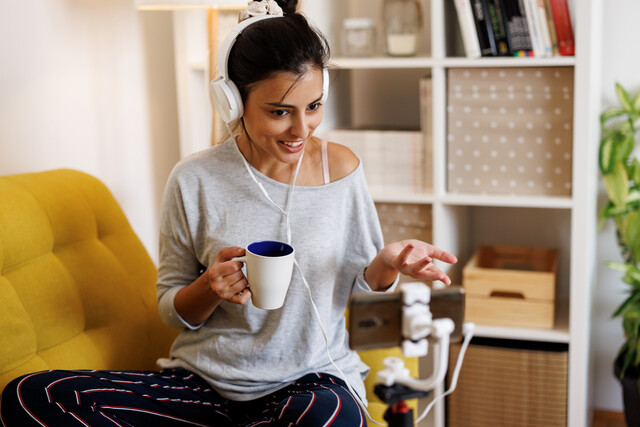 7 hours
0.7 CEUs
Life on Your Terms: Awaken Your Inner Coach
+ More Info
7 hours
0.7 CEUs
Life on Your Terms: Awaken Your Inner Coach
+ More Info
-
 6 hours
0.6 CEUs
Advocacy for Elderly Patients
+ More Info
6 hours
0.6 CEUs
Advocacy for Elderly Patients
+ More Info
-
 3 hours
0.3 CEUs
Understanding Learning Styles
+ More Info
3 hours
0.3 CEUs
Understanding Learning Styles
+ More Info
-
 5 hours
0.5 CEUs
Anxiety Therapy 101
+ More Info
5 hours
0.5 CEUs
Anxiety Therapy 101
+ More Info
-
 4 hours
0.4 CEUs
Asthma 101
+ More Info
4 hours
0.4 CEUs
Asthma 101
+ More Info
-
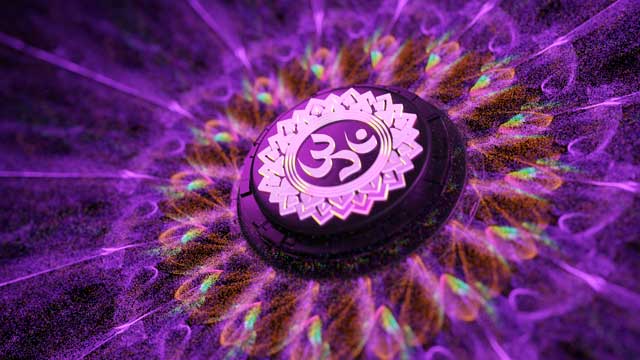 6 hours
0.6 CEUs
Chakras Level 3
+ More Info
6 hours
0.6 CEUs
Chakras Level 3
+ More Info
-
 5 hours
0.5 CEUs
All About Herbs
+ More Info
5 hours
0.5 CEUs
All About Herbs
+ More Info
-
 7 hours
0.7 CEUs
Innovative Thinking Skills
+ More Info
7 hours
0.7 CEUs
Innovative Thinking Skills
+ More Info
-
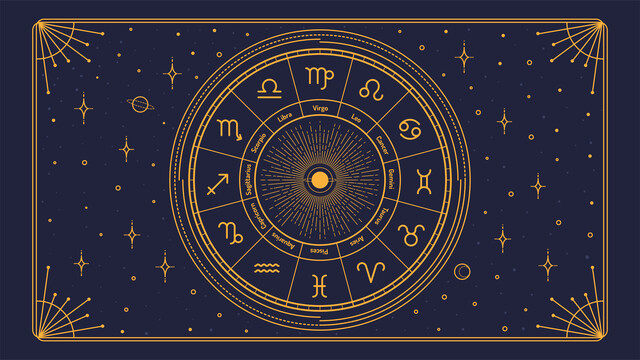 5 hours
0.5 CEUs
Astrology 101
+ More Info
5 hours
0.5 CEUs
Astrology 101
+ More Info
-
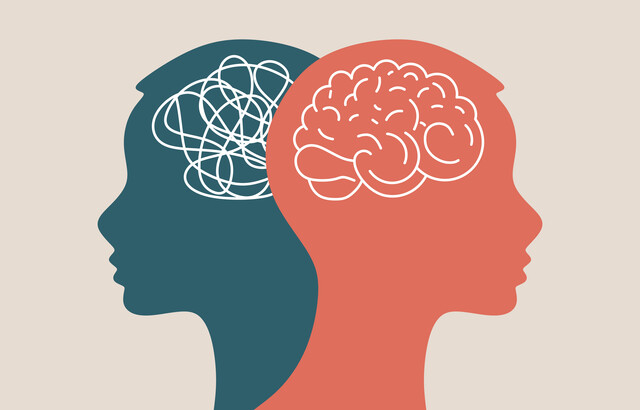 16 hours
1.6 CEUs
Psychology 101
+ More Info
16 hours
1.6 CEUs
Psychology 101
+ More Info
-
 17 hours
1.7 CEUs
ICD-10: Medical Coding
+ More Info
17 hours
1.7 CEUs
ICD-10: Medical Coding
+ More Info
-
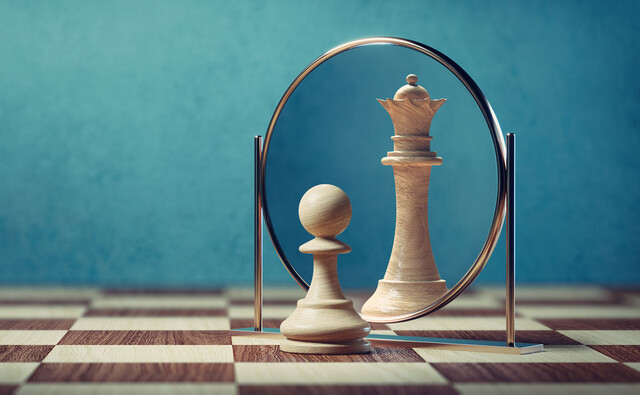 6 hours
0.6 CEUs
Confidence Building
+ More Info
6 hours
0.6 CEUs
Confidence Building
+ More Info
-
 7 hours
0.7 CEUs
Crystal Therapy
+ More Info
7 hours
0.7 CEUs
Crystal Therapy
+ More Info
-
 5 hours
0.5 CEUs
End of Life Care
+ More Info
5 hours
0.5 CEUs
End of Life Care
+ More Info
-
 14 hours
1.4 CEUs
Weight Training
+ More Info
14 hours
1.4 CEUs
Weight Training
+ More Info
-
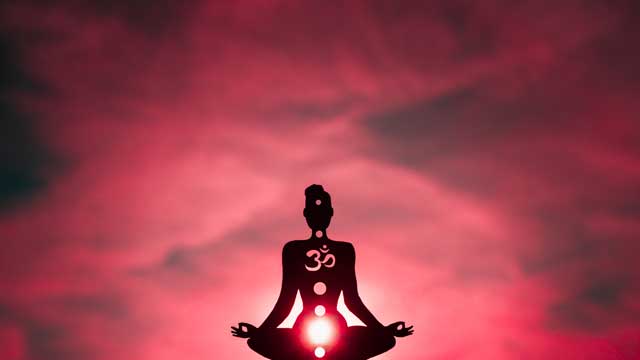 5 hours
0.5 CEUs
Chakras Level 2
+ More Info
5 hours
0.5 CEUs
Chakras Level 2
+ More Info
-
 5 hours
0.5 CEUs
Anger Management Techniques
+ More Info
5 hours
0.5 CEUs
Anger Management Techniques
+ More Info
-
 8 hours
0.8 CEUs
Assertiveness Training
+ More Info
8 hours
0.8 CEUs
Assertiveness Training
+ More Info
-
 7 hours
0.7 CEUs
Conflict Resolution
+ More Info
7 hours
0.7 CEUs
Conflict Resolution
+ More Info
-
 9 hours
0.9 CEUs
Weight Loss Management
+ More Info
9 hours
0.9 CEUs
Weight Loss Management
+ More Info
-
 14 hours
1.4 CEUs
Career Coaching
+ More Info
14 hours
1.4 CEUs
Career Coaching
+ More Info
-
 11 hours
1.1 CEUs
Mediation 101
+ More Info
11 hours
1.1 CEUs
Mediation 101
+ More Info
-
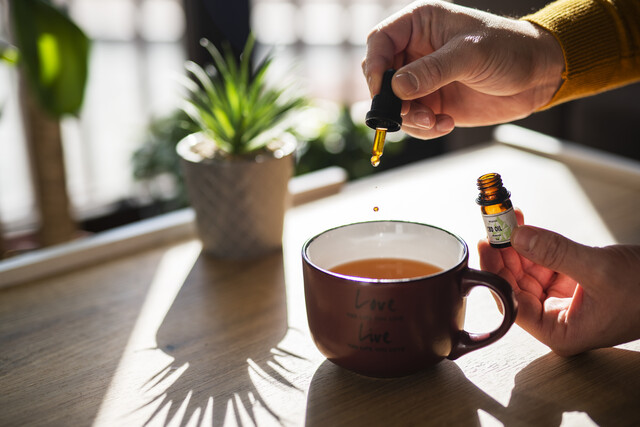 7 hours
0.7 CEUs
Homeopathy 101
+ More Info
7 hours
0.7 CEUs
Homeopathy 101
+ More Info
-
 4 hours
0.4 CEUs
Diabetes 101
+ More Info
4 hours
0.4 CEUs
Diabetes 101
+ More Info
-
 7 hours
0.7 CEUs
Numerology 101
+ More Info
7 hours
0.7 CEUs
Numerology 101
+ More Info
-
 5 hours
0.5 CEUs
Creative Thinking Skills
+ More Info
5 hours
0.5 CEUs
Creative Thinking Skills
+ More Info
-
 7 hours
0.7 CEUs
Healthy Relationships
+ More Info
7 hours
0.7 CEUs
Healthy Relationships
+ More Info
-
 5 hours
0.5 CEUs
Critical Thinking Skills
+ More Info
5 hours
0.5 CEUs
Critical Thinking Skills
+ More Info



